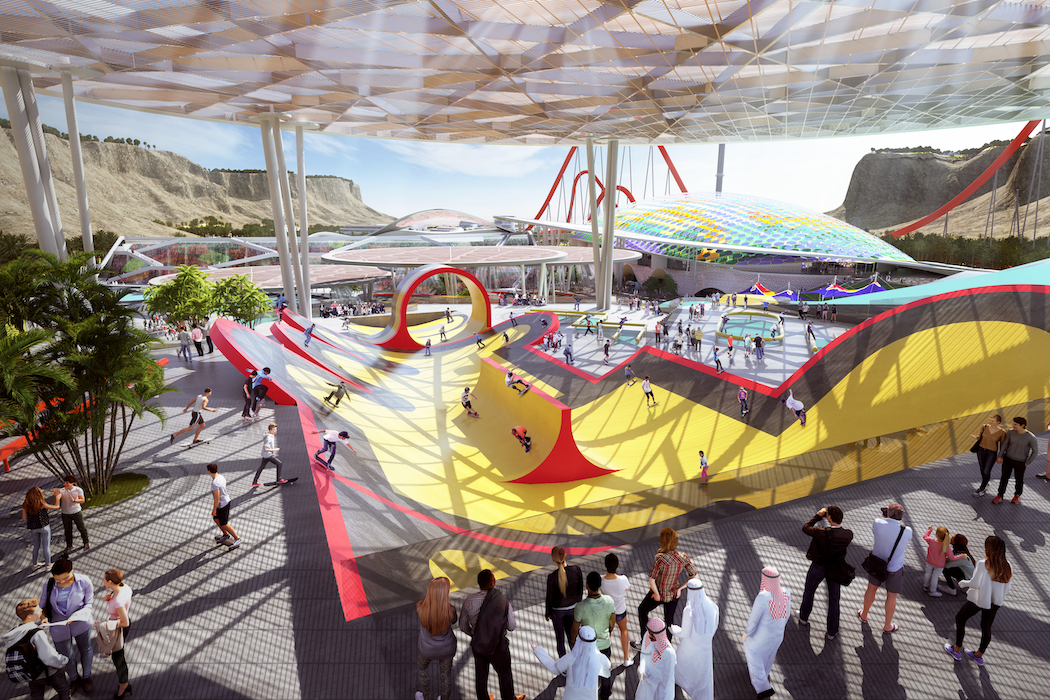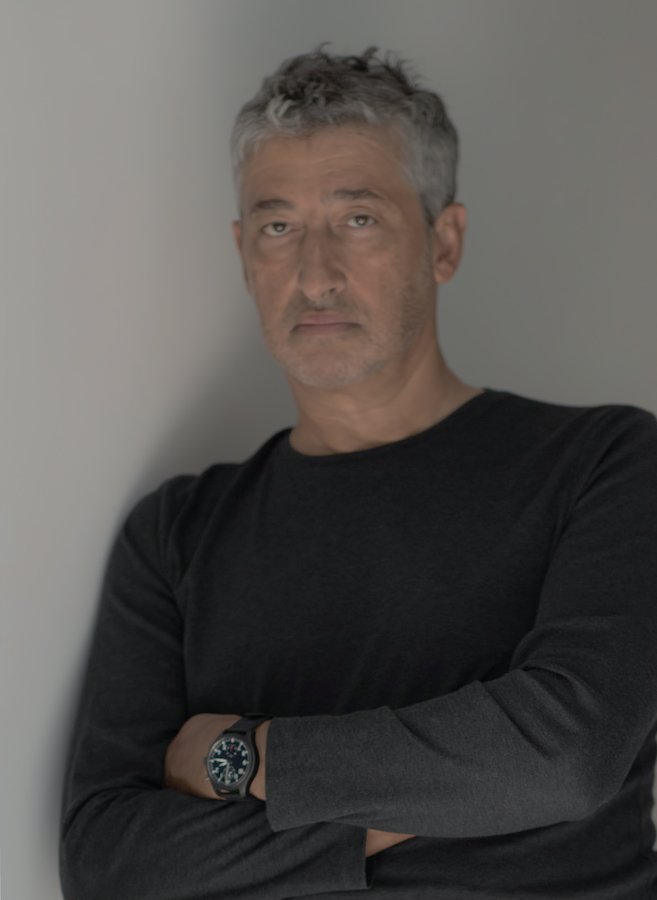LONDON: Architect Hani Rashid has a clear-sighted view of what his profession entails.
“For me our job is to bring out the best in people and their culture and put it into permanent reality — into buildings that might last for many lifetimes. That’s a big responsibility. Everything else we think we ‘must’ do as architects — help make clients wealthy, design icons as shrines to individuals or large entities, or embellish skylines — is all nonsense. That’s not really our job,” he told Arab News.
Rashid stressed the importance of societies retaining their own unique identities.

“Every culture carries beautifully rich and powerful traditions. Unfortunately, at times, we see that a self-inflicted neurosis and sense of misplaced shame sets in with certain cultures, and that (often) has a great deal to do with the dominance of another more powerful culture at its doorstep that makes people feel their roots and heritage need to be questioned and at times discarded. It happened historically in countries like India and Egypt under British rule, and in many ways American culture has prevailed throughout the world and at times impacted places not necessarily always for the better,” he said.
Rashid’s father’s work as an artist meant his family moved around a lot. Rashid was born in Cairo, but lived in Italy, Algeria, the UK and Canada as a child. He credits this experience for developing his sensitivity to other cultures.
“I had to speak Italian fluently as a kid in Rome. I had to speak French in Algeria. I had to get along with the kids in the playground in London. In my teenage years in Canada, I played hockey and picked up a Canadian accent,” he said. “Now, after almost three decades of living in New York, I have essentially become a New Yorker. I am a sort of cultural sponge with a desire to understand and immerse myself in places as deeply as I can.”

He recalled, for example, how on his first visit to Madinah he was captivated by the “surreal and impressive” urban atmosphere. “I arrived at four in the morning during Eid and the streets and mosques were teeming with people from all over the world. I was overwhelmed and fascinated by the whole place, its remarkable spirituality and celebration of the beauty and power of the human spirit,” he said.
When Rashid and his partner Lise Anne Couture, co-founders of the New York based architectural firm Asymptote, designed the W Abu Dhabi –Yas Island hotel, which spans the UAE capital’s Formula One racetrack, they paid special attention to local traditions and culture. Their design, Rashid explained, incorporated rich abstract artistry “taken in particular from looking at the nomadic traditions of movement across the desert combined with the precision of ancient Islamic art and craft traditions, as well as architecture.”
“When the Grand Prix runs every year, about 700 million people around the world tune in to watch the spectacle,” he added. “With each lap, the building is featured in live feeds and I feel this brings civic pride to the region.”

His work has taken him all over the world with projects in the Middle East, the US, China, Russia, Azerbaijan, South Korea, Malaysia, the Netherlands, Denmark, Italy, Hungary, the Czech Republic and Belgium, and Asymptote Architecture has won numerous awards in recognition of its contributions to the progress and merging of art and architecture.
Progress has its drawbacks, though, Rashid warned. While he is impressed with the ambition to utilize advanced technological innovation in architecture — a trend that is increasingly prevalent in the Gulf region — he believes there also needs to be a better understanding of the nature of the buildings and the relationship people will have with their immediate surroundings.
“I am a very big believer that architecture has to inspire — has to be powerful and beautiful. I think for the moment there is a little bit too much of an emphasis on the technological aspects and not enough on the human side of the equation,” he said. “It’s one of my pet peeves that many architects are too busy justifying their work through technology and catchphrases like ‘environmental sustainability’ and ‘intelligent’ building. As a profession we need to stand back and realize that we owe it to the world to design some remarkably beautiful things that not only solve problems but inspire and elevate our sense of what it is to be human.”

Rashid recently designed a large sports complex to be built in Qiddiya Entertainment City — Qiddiya Sport Park — and said he has been approached for possible hotels and hospital projects in NEOM, but that discussions are still in the early stages.
In March, Rashid participated in Healing Arts London, a five-day cultural program in response to the mental health crisis caused by COVID-19, presented by Culturunners’ “The Future is Unwritten” as part of the World Health Organization’s Solidarity Series of Events.
Over the past year, Rashid has been looking at the design of future hospitals and how medical networks could function better. He has researched this subject with his students at the Institute of Architecture at the University of Applied Arts in Vienna, where he holds the post of International Dean.

“When we design luxury hotels or residential towers, we spend a lot of time on the public lobbies and spaces and consider what a person feels when they enter a building,” Rashid said. “That thinking should be the same for a hospital — you should feel welcome in a well-designed, beautiful environment with all the amenities you would need in any public realm.”
He believes the pandemic will cause some major shifts in both working and living patterns.
“All of us are going to come out of this pandemic and realize we have to make the most of our surroundings. In architecture and design we are going to see a drive to make the most of our local situation and not see the local as something of less value than places that are far away,” he said.
“Also, there is no doubt we will see less focus on the office environment as we have known it. The idea that to be productive you have to work in a 50-plus-story skyscraper and sit shoulder-to-shoulder in a room full of other people with potentially no operable windows, is a scene we will one day look back on in the same way that today we look back on people crammed into factories in the late 19th century,” he concluded.


